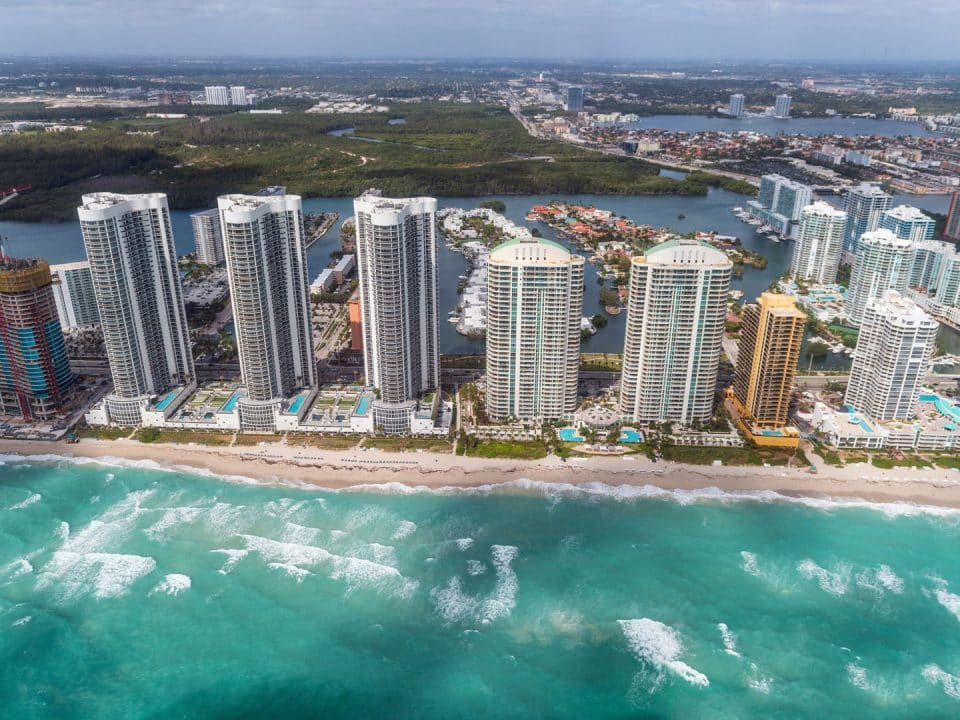
Cause and Effect of Florida’s New Condo Law
Following the 2021 collapse of the Champlain Tower South condominium in Surfside, Florida, the state Legislature enacted a new law to address high-rise condo safety concerns. The new regulations require increased inspections, specify the involvement of experts, mandate the funding of reserves and remove inspection exemptions. If executed with diligence, these new requirements should improve the safety of high-rise condominium projects. Of course, this comes at a cost to condo owners.
For fuller context, it’s important to consider the condo market has run through a hot-to-cold speed cycle since 2020. The market first got hot during the COVID-19 pandemic that induced a wave of migrants to move to Florida with an accompanying drop in mortgage rates and then it cooled following the Federal Reserve’s sharp increase in interest rates starting in March 2022. Two other big events punched the condo market exclusively: The failure of the Surfside tower and a series of tougher and potentially costly safety measures designed to ensure the structural integrity of older condo buildings. In sum: the law affects more than half of Florida’s high-rise condo buildings.
If you expected the condo market to suffer in the wake of the tower collapse — coupled with a new safety law that generally increases the cost of Florida condo ownership — you may be surprised. The UF Bergstrom Real Estate Center examined more than three years of sales price and volume data for condos in South Florida, the nucleus of the state’s vast condominium market, and found the market shockingly resilient. We explore the data later in our story.
The cause
Determining the cause for new legislation is simple — it was the Surfside tower’s failure. As shocking and unexpected as this event was, however, the soundness of the building had not been completely ignored. At the time of its collapse in the early morning hours of June 24, 2021, the 40-year-old building had undergone a Miami-Dade County-mandated safety inspection and its condo association was in the process of establishing a plan to fix problems that were identified. Prior to the new legislation, only Miami-Dade and Broward counties required the reinspection of condo buildings — and only after 40 years, not 30 as required under the new law — and associations had the ability to waive funding for reserves based on a majority vote of unit holders.
The big picture on Florida condos
For about two generations now, the condominium has played a starring role in the Florida dream that lured people with the promise of sunshine and a leisurely beachfront lifestyle. Since the state passed its first condominium law in 1963, Florida’s coastline has been transformed by tens of thousands of condominium complexes. A 1970 story in Florida Trend magazine declared: “a new lifestyle is evolving in Florida and with it, a new habitat, the condominium.”
Today more than 3.3 million Floridians live in 1.5 million condo units (Figure 1) — the state has a little more than 20% of the nation’s condos according to the Census Bureau. Now many of these first-generation high-rises, not unlike the 40-year-old Champlain Tower South, are showing their age. Florida not only has more condo units, but it also likely has more “old” ones. As of 2022, the state was home to 912,000 condominiums aged 30 years or more. In Miami-Dade, Broward and Palm Beach counties, 74% of condos were built in or before 1993, based on the analysis of Florida Department of Revenue data by the UF Bergstrom Real Estate Center.
Figure 1 - Florida Condominiums by Year Built
| Age of Building (years)* | Units | Associations | Residents |
|---|---|---|---|
| 50+ | 105,404 | 1,899 | 231,889 |
| 40-50 | 479,435 | 8,638 | 1,054,757 |
| 30-40 | 327,537 | 5,902 | 720,581 |
| Subtotal: 30+ | 912,376 | 16,439 | 2,007,227 |
| 20-30 | 141,773 | 2,554 | 311,901 |
| 10-20 | 428,657 | 7,724 | 943,045 |
| 0-10 | 46,958 | 846 | 103,308 |
| Total | 1,529,764 | 27,563 | 3,365,481 |
*As of 2022
Source: Facilities Advisors, Florida Department of Business and Professional Regulation
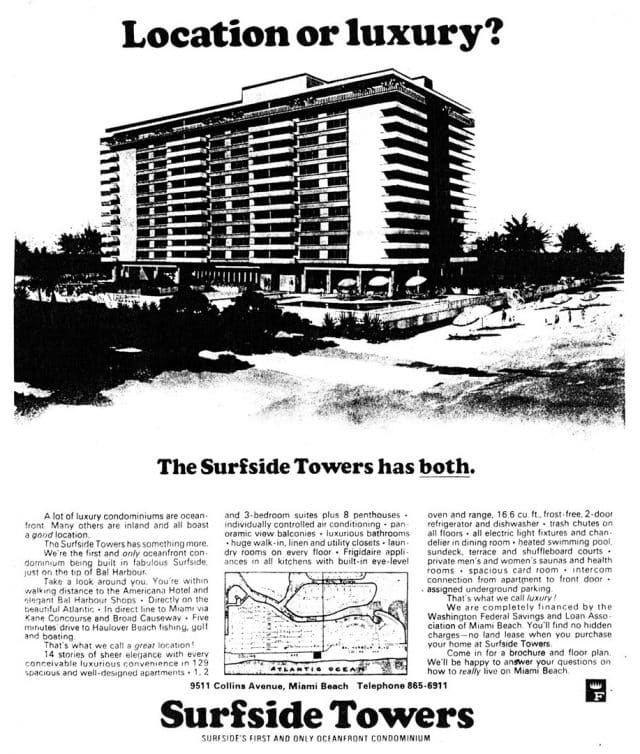
What’s more, Florida has the highest percentage of buildings with underfunded reserves, according to one estimate. “Florida has approximately 50% more associations that are considered weaker than any other state,” said Will Simons, who heads Florida and Southeast operations for Association Reserves, one of the largest U.S. providers of reserve studies for condo and community associations. Such reserves are required to fund major maintenance and repair projects or to replace big items of a condo building’s common property. He based the estimate on the thousands of reserve studies the company has conducted in Florida and other states. It considers a condo association as “weak” if less than 30% of its estimated required reserves are funded. It was Simons’ company that completed a reserve study of Champlain Towers South a few months before it collapsed; it found the building significantly underfunded capital projects and unit owners faced a “huge” special assessment to make repairs, according to the company’s website.
Even more alarming is the number of associations that have no reserves, or a fraction of what is required. Association Reserves estimated one-fifth of Florida associations have 0 to 10% of the necessary funds socked away to pay for any major repair and maintenance costs. “Buildings are like humans,” Simons said. “Associations that neglect the health of their condo buildings risk disaster, just as people do if they neglect their health.”
New condo law
Playing catch up, the Florida Legislature passed a series of regulations in 2022 and 2023 designed to improve the safety of condominiums. By yearend, condo associations must complete a structural milestone inspection for buildings receiving a certificate of occupancy on or before July 1, 1992. Condo buildings that reached 30 years old after July 1, 2022, and before the end of this year have until Dec. 31, 2025, to complete the milestone inspection. Condo associations also must complete a structural integrity reserve study of buildings and fully fund reserves to cover structural components of buildings.
Florida has been an outlier among most states regarding fully funding reserves. Prior to the new condo law, Florida was one of just 13 states without legal requirements or statutory guidance for reserves, according to the Community Associations Institute, a special interest group and trade association for condo boards. “The reality is that condo buildings require professional management and that means reserves for replacements and repairs should have been mandatory since the beginning. They were not,” said Joseph Hernandez, a real estate attorney with the Miami law firm Bilzin Sumberg Baena Price & Axelrod. “Many buildings have been allowed to exist without proper management and adequate reserves. Champlain Towers was a huge wake-up call.”
The effect
To comply with the new regulations, condo associations are raising monthly fees and imposing special assessments to catch up on needed repairs and maintenance — resulting in surprise expenses for many owners. News outlets have run stories about owners forced to sell their units or engage in a battle over bills of tens of thousands of dollars. Condo owners in one Miami high-rise reportedly filed a lawsuit against their building association to contest assessments running into the hundreds of thousands of dollars. The new rules will bring the costs of future capital projects current by requiring full funding, which will in turn weaken challenges against new assessments.
You’d think all the tumult would negatively affect the overall Florida condo market. But our review of the South Florida data provides little if any evidence of weakness, The latest findings add to our ongoing examination of the market; our initial analysis nine months after the Surfside disaster found no substantial change in price and transaction trends, suggesting buyers may consider the tragedy an isolated event (see Due Diligence’s fall 2022 issue).
However, such major events may take many months or years to play out. The first regulatory deadline under the new law that was originally passed in June 2022 doesn’t hit until Dec. 31 this year. “We haven’t seen a rapid flight from the condo market,” said long-time real estate broker John Adams, president of Daytona-based Adams, Cameron and Co. “We do have concerns about the future of the market as we see the implementation of the laws from ‘22 and ‘23.”
Performance numbers
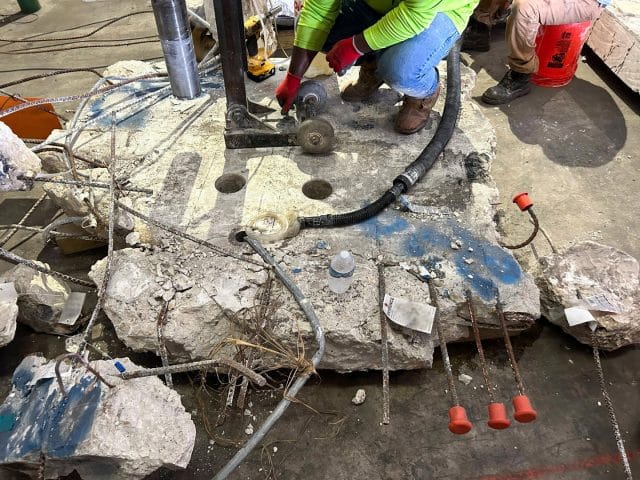
The procedural effects of the new law will increase inspections, force greater expertise in building evaluation and require full reserves funding for capital projects. These steps should improve condo building safety and owner confidence. They will also add ongoing costs to condo ownership. Let’s review numbers that reveal the condo market’s performance in the wake of major recent events and the passage of the new condo regulations.
Figure 2 matches the volume of condominium sales throughout the South Florida market (Palm Beach, Broward and Miami-Dade) to the dates of significant events arising over the past four years.
- Prior to COVID-19, approximately 3,500 condo units transacted in a typical month.
- Following the initial shock of the pandemic lockdown, sales climbed to over 4,000 units per month.
- In December 2020, 30-year mortgage rates bottomed at 2.7% and remained low for more than a year leading to monthly sales volume in the mid-7000s.
- The Surfside condo collapsed in June 2021, softening the market to just over 5,000 units per month until low-mortgage rates and rising state in-migration propelled the sales over 13,000 per month.
- Mortgage rates increased to 5% in April 2022 triggering a rapid decline in transaction volume. Rates continued to climb to more than 7%.
- The initial condo legislation passed in July 2022 compounded downward pressure on sales activity leading to a low of 2,100 units during January 2023.
- Following a bit of recovery and state Legislature’s passage of amendments to the law in June 2023 the market transacted at a slightly lower level but close to pre-pandemic levels.
Source: Florida Department of Revenue, UF Bergstrom Real Estate Center
Through this series of tumultuous events, condo transaction volume spiked and receded, leaving it very close to where it started. However, we should acknowledge that sales volume is a bit lower today and population growth has been significant.
More surprisingly, the median condo sales price in South Florida continued to escalate (Figure 3). As the volume of transactions responded to market events, the average price for the sales that closed continued a steady climb from approximately $200,000 per unit to over $290,000 per unit. None of the major events — from COVID-19 to mortgage rate changes to the failure of the Surfside condo tower to costly new regulations — seemed to negatively impact the average condo price.
Source: Florida Department of Revenue, UF Bergstrom Real Estate Center
The next question is whether age of the buildings has had an impact on the condo market. Certainly, there must have been a different response between newly constructed condos and those more than 30 years old that are immediately affected by the new laws. Figure 4 reveals that there was a different response but not in the expected direction. First, unsurprisingly, condo units in more recently constructed buildings sold at significantly higher prices than ones in older buildings. What was not expected was that the older buildings produced a greater cumulative price gain over this period, despite the failure of the Surfside tower and responding laws. Both events more negatively affected older buildings, yet the unit values grew at a higher rate cumulative rate: 58% for older buildings compared with 37% for newer buildings.
Source: Florida Department of Revenue, UF Bergstrom Real Estate Center
Perhaps the effects on older condos were more dramatic in transactions volume since we see they did not disproportionately alter price. Not according to the data in Figure 5, which show that the proportion of total sales of older condos increased. Approximately two-thirds of the existing condo inventory is 30 or more years old, leaving one-third new to 30 years. Moving the timeline to start January 2022 — six months after the tower collapse and six months prior to the new condo law — we see that the proportion of condo sales that were older properties was only slightly higher than the inventory.
Source: Florida Department of Revenue, UF Bergstrom Real Estate Center
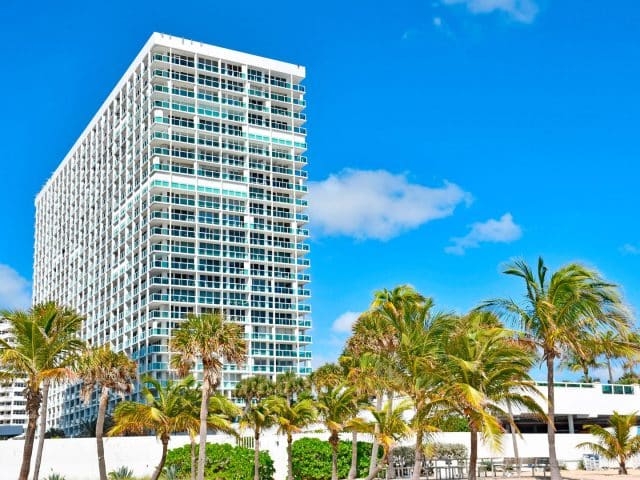
Logic leads us to believe that the market should respond to new information about changes in regulations and its accompanying costs by damping older property sales. Once again, our intuition is refuted: The proportion of sales that are older units rose to 74% during the month the law was enacted and has since escalated to more than 80%. Despite the shocking risk revelation for older coastal condo buildings and the corresponding newly regulated costs to improve safety, sales of South Florida’s 30-year-old condo units continued to represent an increasing proportion of total sales and at continuously increasing prices. If recent events improved the safety of coastal condo buildings, the indication is that the market can absorb the related costs.
A safer Florida
There is little doubt that the new condo safety law has increased the cost of condo ownership in Florida. It awakened under-funded associations to schedule inspections and muster funds to shore up neglected reserves. Some associations are taking out loans to pay for neglected maintenance and repairs, while some owners are seeking loans to pay for special assessments. Miami-Dade County established a program to provide financial assistance to condo owners who make less than 140% of the area’s median income to help pay special assessments and higher fees.
The new state law has both supporters and critics, Hernandez noted. “Some say the changes to the Condo Act didn’t go far enough. Others say this will make it much more expensive to live in a condo and will drive many out,” he said. “That is probably true, but we also cannot allow high-rise residential structures to not be properly managed and maintained.”
If selling is the best way out for some unit holders that means finding a buyer willing to pay outstanding special assessments and higher monthly fees. State law requires disclosure of all such expenses, noted Adams, the Daytona Realtor. Buyers also are entitled to notes of association board meetings and copies of association financial statements to assess if a building has adequate reserves. “Personally, given two identical buildings, I would look to the reserves to determine which is more valuable,” Adams said. “The reserve is there for a reason.”
At least one thing seems clear, though. The legacy of the new condo regulations is likely a safer Florida, Simons said. Associations can no longer kick the can down the road by avoiding paying for inevitable maintenance and repairs. “By illuminating the true cost of ownership for residents in these buildings, the new legislation should ultimately help to protect the physical and financial health of associations all around the state,” Simons said. Thus far, it seems that the market values the improved safety and is willing to absorb the associated costs.

Author:
Demetri Psarianos is a University of Florida Nathan S. Collier Master of Science in Real Estate candidate.
Condo Safety Law
Milestone Inspections
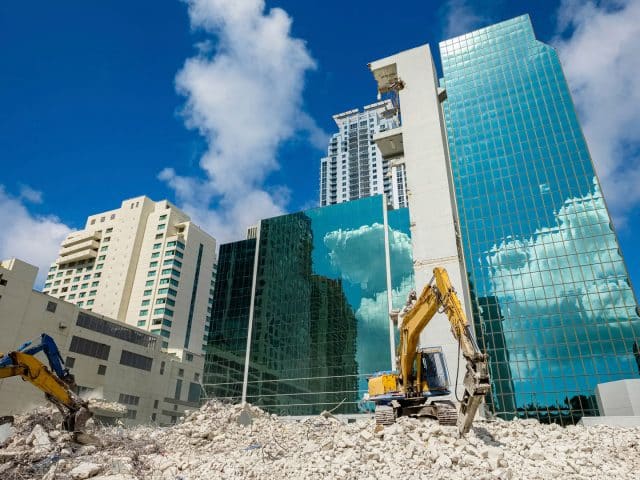
- Requires an initial milestone safety inspection of structural components by Dec. 31 of buildings for which a certificate of occupancy was issued on or before July 1, 1992. For buildings less than 30 years old, the milestone inspection is required by the year the building reaches 30 years old.
- Applies only to buildings three stories or taller.
- Inspections are required every 10 years after the initial milestone inspection.
- The 2023 amended law granted local enforcement agencies the discretion to give condo associations more time to complete milestone inspections.
- Municipalities also may require a 25-year inspection if a building’s proximity to seawater or other circumstances warrant a timelier inspection. The law initially required 25-year inspections of buildings within three miles of the coast.
- The law also was amended to allow a team of professionals to conduct a milestone inspection as long as an engineer or architect acting as a registered design professional signs and seals the report.
- Associations must distribute a summary of inspection reports to each unit owner within 45 days.
Reserve Studies and Funds
- Associations with condo buildings three or more stories must hire a Florida licensed architect, engineer, reserve specialist or analyst to conduct a structural integrity reserve study (SIRS) by yearend. The studies are now mandatory, unable to be waived.
- A SIRS is required every 10 years thereafter.
- Applies to all condo associations in existence on or before July 1, 2022.
- Reserves must include necessary funding for roofs, fire protection, plumbing, electrical systems, windows, foundations, waterproofing, structural components, and most any item over $10,000 that negatively affects anything listed above.